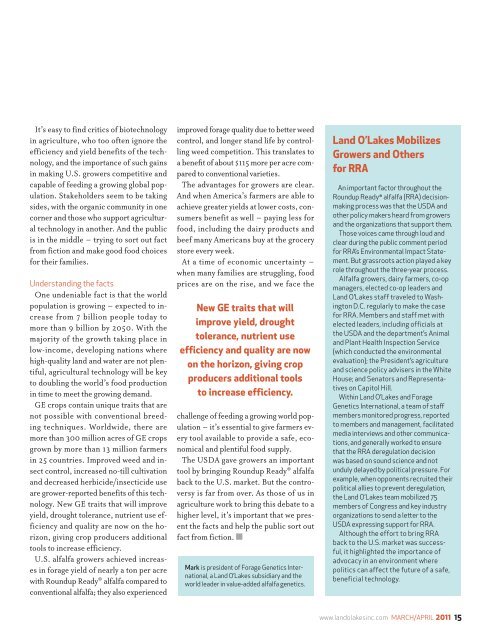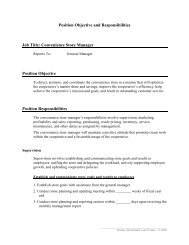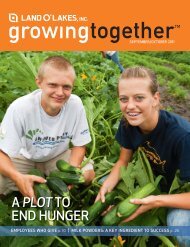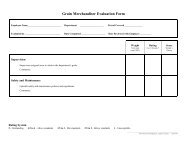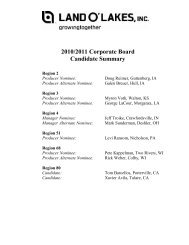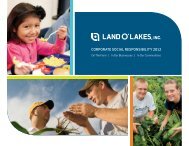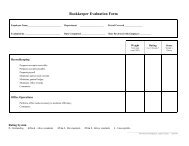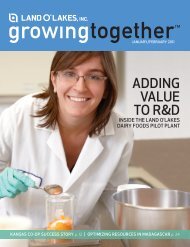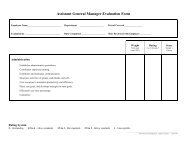2011 March/April Issue - Land O'Lakes Inc.
2011 March/April Issue - Land O'Lakes Inc.
2011 March/April Issue - Land O'Lakes Inc.
- No tags were found...
You also want an ePaper? Increase the reach of your titles
YUMPU automatically turns print PDFs into web optimized ePapers that Google loves.
It’s easy to find critics of biotechnologyin agriculture, who too often ignore theefficiency and yield benefits of the technology,and the importance of such gainsin making U.S. growers competitive andcapable of feeding a growing global population.Stakeholders seem to be takingsides, with the organic community in onecorner and those who support agriculturaltechnology in another. And the publicis in the middle – trying to sort out factfrom fiction and make good food choicesfor their families.Understanding the factsOne undeniable fact is that the worldpopulation is growing – expected to increasefrom 7 billion people today tomore than 9 billion by 2050. With themajority of the growth taking place inlow-income, developing nations wherehigh-quality land and water are not plentiful,agricultural technology will be keyto doubling the world’s food productionin time to meet the growing demand.GE crops contain unique traits that arenot possible with conventional breedingtechniques. Worldwide, there aremore than 300 million acres of GE cropsgrown by more than 13 million farmersin 25 countries. Improved weed and insectcontrol, increased no-till cultivationand decreased herbicide/insecticide useare grower-reported benefits of this technology.New GE traits that will improveyield, drought tolerance, nutrient use efficiencyand quality are now on the horizon,giving crop producers additionaltools to increase efficiency.U.S. alfalfa growers achieved increasesin forage yield of nearly a ton per acrewith Roundup Ready® alfalfa compared toconventional alfalfa; they also experiencedimproved forage quality due to better weedcontrol, and longer stand life by controllingweed competition. This translates toa benefit of about $115 more per acre comparedto conventional varieties.The advantages for growers are clear.And when America’s farmers are able toachieve greater yields at lower costs, consumersbenefit as well – paying less forfood, including the dairy products andbeef many Americans buy at the grocerystore every week.At a time of economic uncertainty –when many families are struggling, foodprices are on the rise, and we face theNew GE traits that willimprove yield, droughttolerance, nutrient useefficiency and quality are nowon the horizon, giving cropproducers additional toolsto increase efficiency.challenge of feeding a growing world population– it’s essential to give farmers everytool available to provide a safe, economicaland plentiful food supply.The USDA gave growers an importanttool by bringing Roundup Ready® alfalfaback to the U.S. market. But the controversyis far from over. As those of us inagriculture work to bring this debate to ahigher level, it’s important that we presentthe facts and help the public sort outfact from fiction. ■Mark is president of Forage Genetics International,a <strong>Land</strong> O’Lakes subsidiary and theworld leader in value-added alfalfa genetics.<strong>Land</strong> O’Lakes MobilizesGrowers and Othersfor RRAAn important factor throughout theRoundup Ready ® alfalfa (RRA) decisionmakingprocess was that the USDA andother policy makers heard from growersand the organizations that support them.Those voices came through loud andclear during the public comment periodfor RRA’s Environmental Impact Statement.But grassroots action played a keyrole throughout the three-year process.Alfalfa growers, dairy farmers, co-opmanagers, elected co-op leaders and<strong>Land</strong> O’Lakes staff traveled to WashingtonD.C. regularly to make the casefor RRA. Members and staff met withelected leaders, including officials atthe USDA and the department’s Animaland Plant Health Inspection Service(which conducted the environmentalevaluation); the President’s agricultureand science policy advisers in the WhiteHouse; and Senators and Representativeson Capitol Hill.Within <strong>Land</strong> O’Lakes and ForageGenetics International, a team of staffmembers monitored progress, reportedto members and management, facilitatedmedia interviews and other communications,and generally worked to ensurethat the RRA deregulation decisionwas based on sound science and notunduly delayed by political pressure. Forexample, when opponents recruited theirpolitical allies to prevent deregulation,the <strong>Land</strong> O’Lakes team mobilized 75members of Congress and key industryorganizations to send a letter to theUSDA expressing support for RRA.Although the effort to bring RRAback to the U.S. market was successful,it highlighted the importance ofadvocacy in an environment wherepolitics can affect the future of a safe,beneficial technology.www.landolakesinc.com MARCH/APRIL <strong>2011</strong> 15


